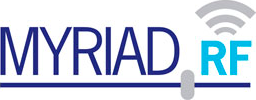Anyone have some good antenna recommendations? Are they all pretty much the same?
Antennas vary greatly, depending on what you want to do.
Having antennas that are resonant on needed frequencies greatly improves performance.
Some antennas use systems to increase gain (TX&RX).
What are your frequencies of interest?
Ed
Is it ridiculous to have an antenna that covers 100kHz-3.8GHz?
100kHz-3.8GHz is really a big range. The closest you can come is a telescoping antenna and adjust it to match the wave length. Even with that it is hard to find a single one that can change length that much. Also, the input ports of the Lime will not support all of the freq’s on the same port. The length calculation can be found Here .
The only antenna that I know of that is actually resonant & broadband is a “Discone”.
As for 1 antenna doing it all, it can never happen, unless it’s a dummy load.
Here’s some examples
http://www.buxcomm.com/ground_plane_calculator.htm
Ground plane verticals:
100 Khz = 2340 feet
1040 Khz (1.040 Mhz WBZ AM broadcast) + 225 feet
27 Mhz (CB radio band) = 8.6 feet
144 Mhz (Ham radio 2 meter band) = about 19 inches
440 Mhz (Ham radio 70cm band) = 6.5 inches
800 Mhz (Old cell phone band from the 80s) = 3.5"
Let’s cap it at 3.5 Ghz = .802 inches.
A kitchen chair will receive many frequencies.
Ed
Thanks for that! So, lets says I get a fancy new discone antenna, do I just plug it in? Will that be the best performance I get get out of the SDR without going to another more specific antenna?
I hear talk of amplifiers. Is that part of an old radio set up or does that relate to sdrs too?
ED,
A Vivaldi also has a very wide bandwidth, but are very directional.
Voxmeus,
There are two types of amplifiers between the “radio” and the antenna. One is the LNA (Low Noise Amplifier) that is used to receive signals. As received signals are weak it is more important that they don’t add noise than that they drive a lot of power. Modern IC radios usually have a built in LNA as they are easy to build as part of the chip. If your antenna is a log way away from the antenna you might have to add a LNA. An example of this is the small electronics block at the focus point in a sat TV antenna uses a LNA to provide enough drive to get the signal down the cable to the sat box in your living room with a good signal. Also some higher priced outdoor terrestrial TV antennas have a LNA. Short answer is if you keep your antenna feed short you will not likely need a LNA. Also too much power at the input of a SDR will burnout the input.
The second type of amp is a Power Amplifier (PA) that is used on the transmit side. These assume a reasonable signal from the radio so they are more focused on gain rather than low noise. Commercial FM and TV stations have multistage PAs that can reach almost a mega Watt. Short answer, don’t bother until you get your ham license to stay out of trouble.
Another issues with some antennas/cable/radios is that their impedance must match or the signal will echo (reflect) where the impedances change and you will loose much of your signal. Something called baluns are used to match-up impedances if they are not all the same. You will often see a small balun with TV antennas.
To go back to your original questions about broad band antennas, audio analogies are often helpful with antennas. Antennas have to “ring” at the frequency (wavelength) of the signal. Like piano strings, their natural resonant frequency is determined by length. Simple dipole antennas use a length that is 1/2 the wavelength of the signal. arrl.org has tons of good educational material for learning about antennas. Antennas can be simple for most purposes or as complex to eek out the last bit of performance. Where I work we have three PhDs in antenna design who run simulations all day long to accomplish the very odd patch phased array like designs we need.
Discones can be built for ant band spread. It’s all in the construction. Generally, the average store bought discone does 100 to 500 Mhz. THey can be scales for HF, but at 60’-120’, only the government uses them. Google " HF discone img " You will see how big they are.
Ed
